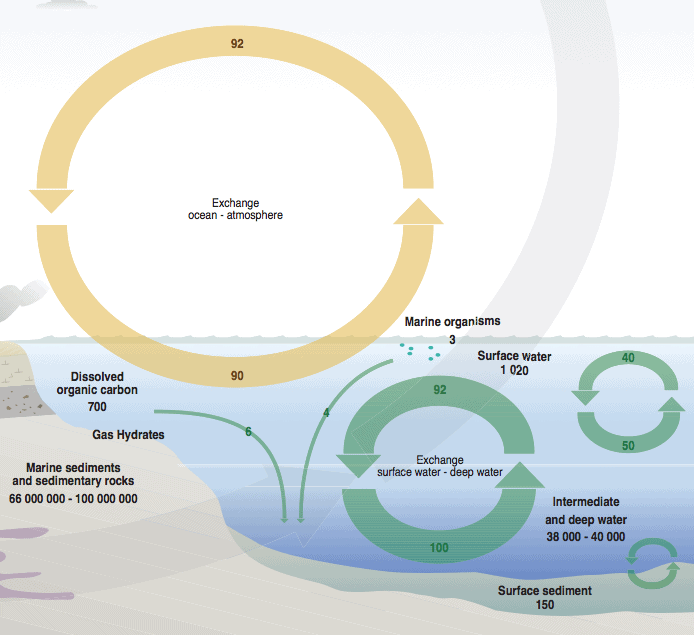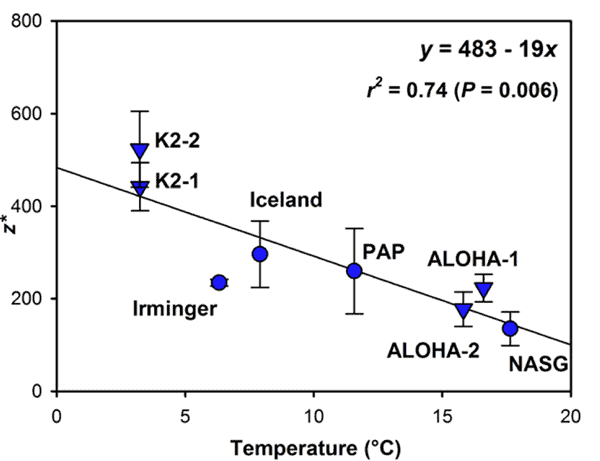Since the mid-XIXth century average global temperatures have risen by ~0.8 degrees Centigrade, yet this figure would have been much higher were it not for the world’s oceans ability to soak up most of the heat trapped by greenhouse gases. The IPCC estimates that some 90% of the heat trapped by CO2 and methane since the 1970s has been absorbed by the world’s oceans and converted into organic carbon, sinking to the floor where it stays trapped for hundreds of years. However, the carbon sinking waters aren’t going to save us forever. A new study published by researchers at University of Southampton found that less organic compounds are transported because the waters are warmer. As the oceans warm even further because of man-made global warming their ability to soak carbon diminishes further, thus creating a feedback loop.
An overused sponge

Its not the water itself that soaks the carbon, but the tiny marine creatures known as phytoplankton which use it along with sunlight captured from the surface to photosynthesize, just like plants do. Through this process, the carbon dioxide is transformed into organic carbon compounds that rest in the phytoplankton. Through sinking particulate matter, largely from zooplankton feces and aggregates of algae, the organic carbon from the upper part of the ocean is transferred into the deeper layers below. This process is called a “biological pump”.
The color of ocean waters is an indicator of the type of phytoplankton biomass and its composition. For example – green ocean water means the particular area probably contains a lot of phytoplankton. Blue water could mean that portion of the ocean has less phytoplankton. This insight is used to make large scale assessments of biological pump efficiency using satellite imagery, even on a global level.
The UK researchers, however, used a more refined method to gauge the biological pump. Sediment traps called Pelagra were employed, which consist of a funnel or cylinder that is held vertically in the water, with the top end open to catch material sinking through the water column and a sample cup connected to the bottom end to store the material for analysis, according to Dr Chris Marsay, who led the study. These are much better than traditional traps because they can be used to collect samples from variable depths, not just the ocean surface or floor.
Several traps were placed at various depths up to 700 meters below the Atlantic Ocean’s surface. These samples were combined with results obtained by a similar study made earlier in the Pacific.

Where the water was warmer, the amount of collected organic carbon was lower. This suggests that in warmer waters, phytoplankton and other organisms are more likely to dissolve in the upper ocean before they sink. When this happens, the carbon is then re-emitted back into the atmosphere, compromising the carbon sink as relayed in a paper published in Proceedings of the National Academy of Sciences.
“This would potentially result in reduced storage of carbon dioxide by the oceans, effectively acting as a positive feedback mechanism, with less atmospheric carbon dioxide being removed by the oceans,” Marsay says.
This isn’t the first study to show that ocean carbon sinks are less potent. A study published in Nature in 2009 was the first to quantify the perceived trend that oceans are becoming less efficient carbon sinks. The findings showed that oceans have absorbed a smaller proportion of fossil-fuel emissions, nearly 10 percent less, since 2000.
via Carbon Brief


